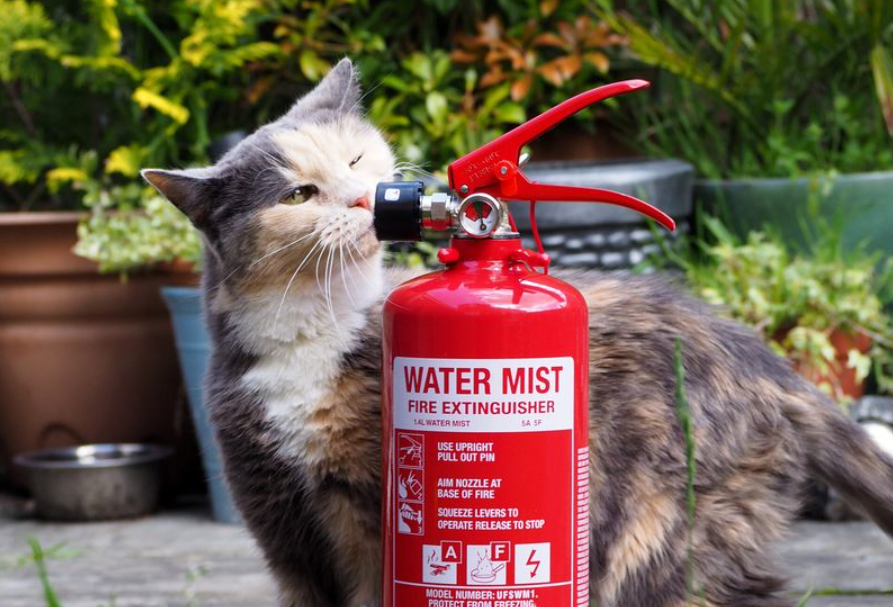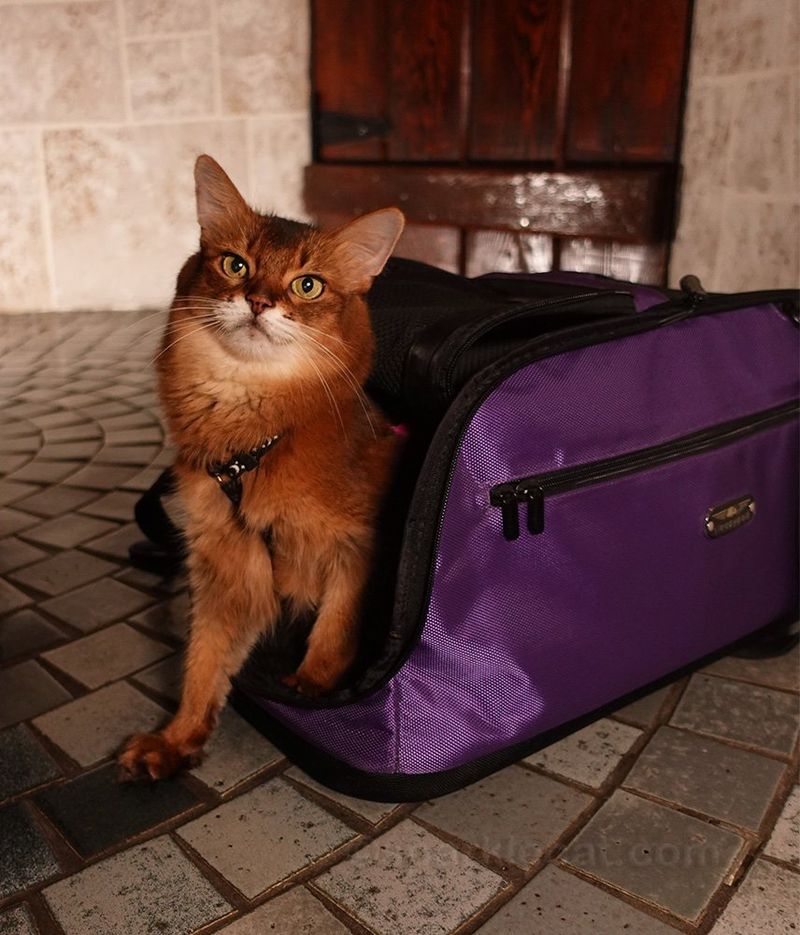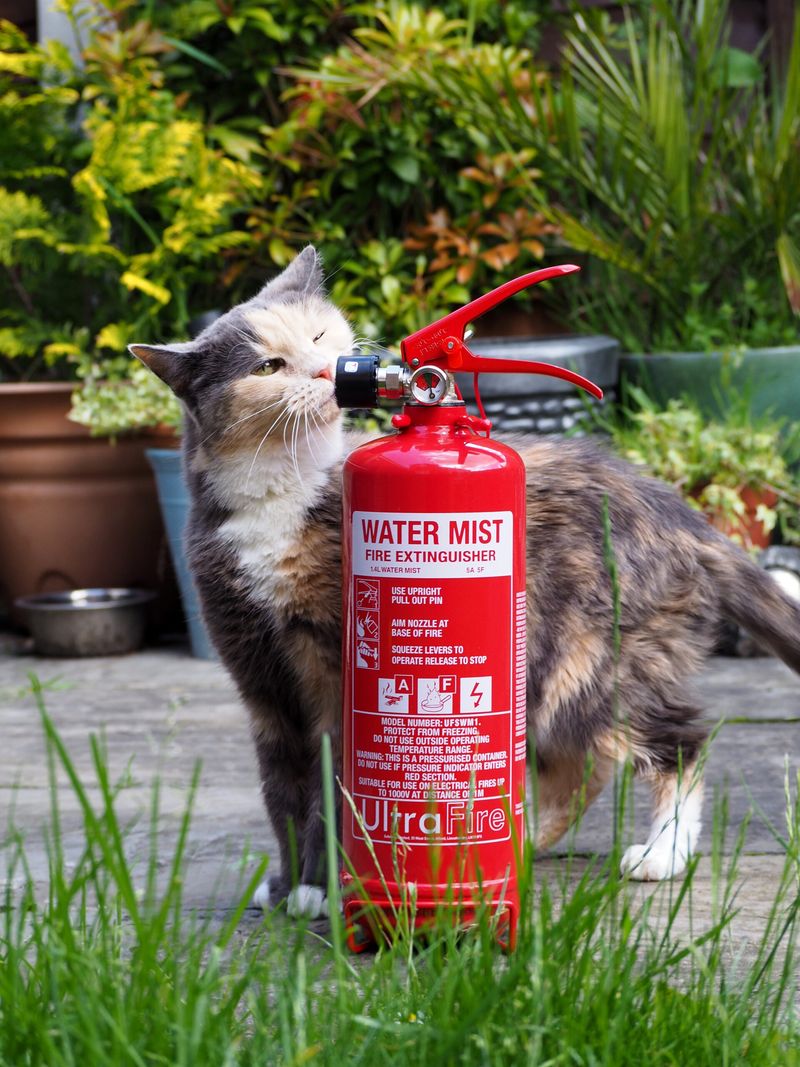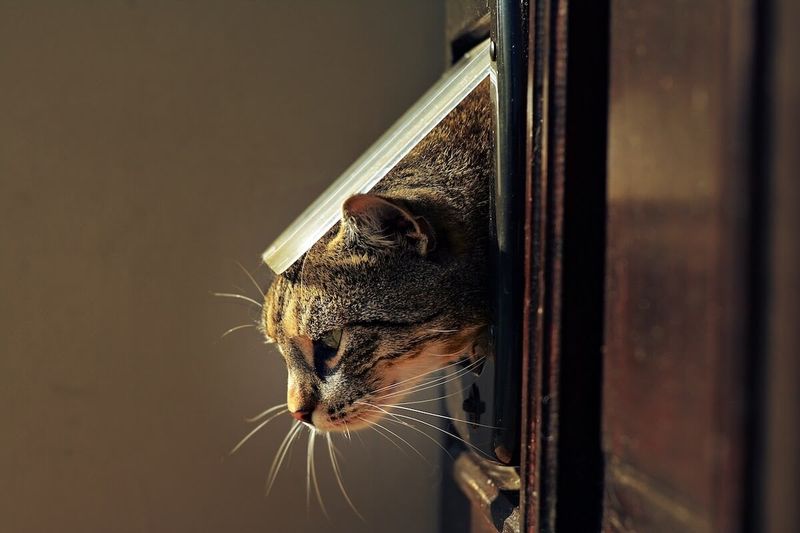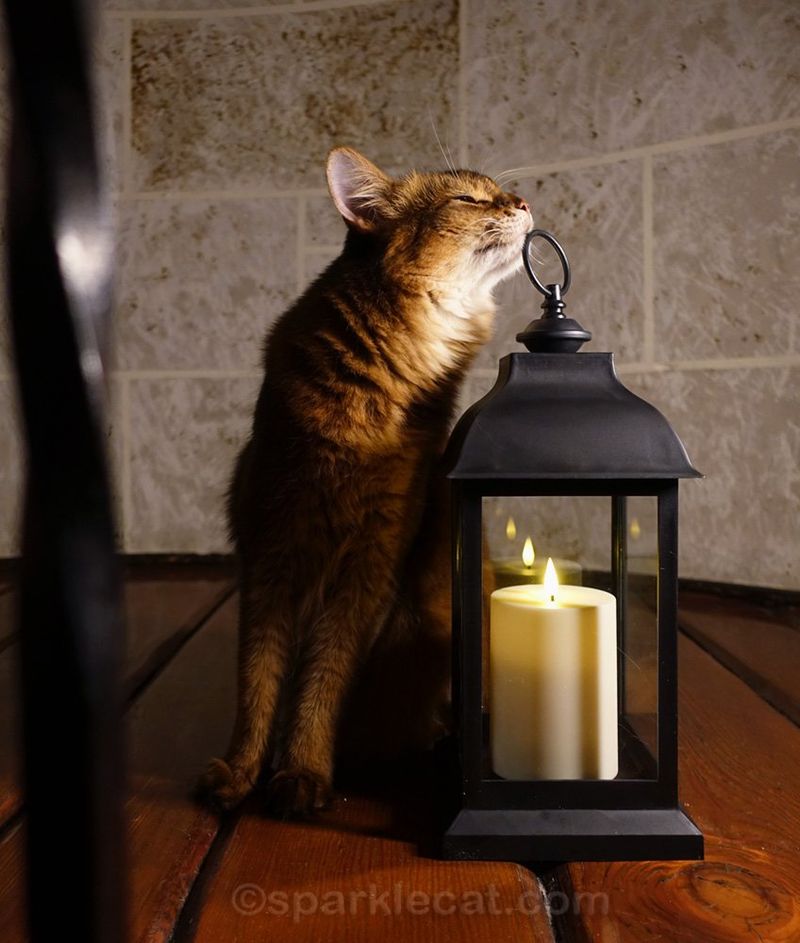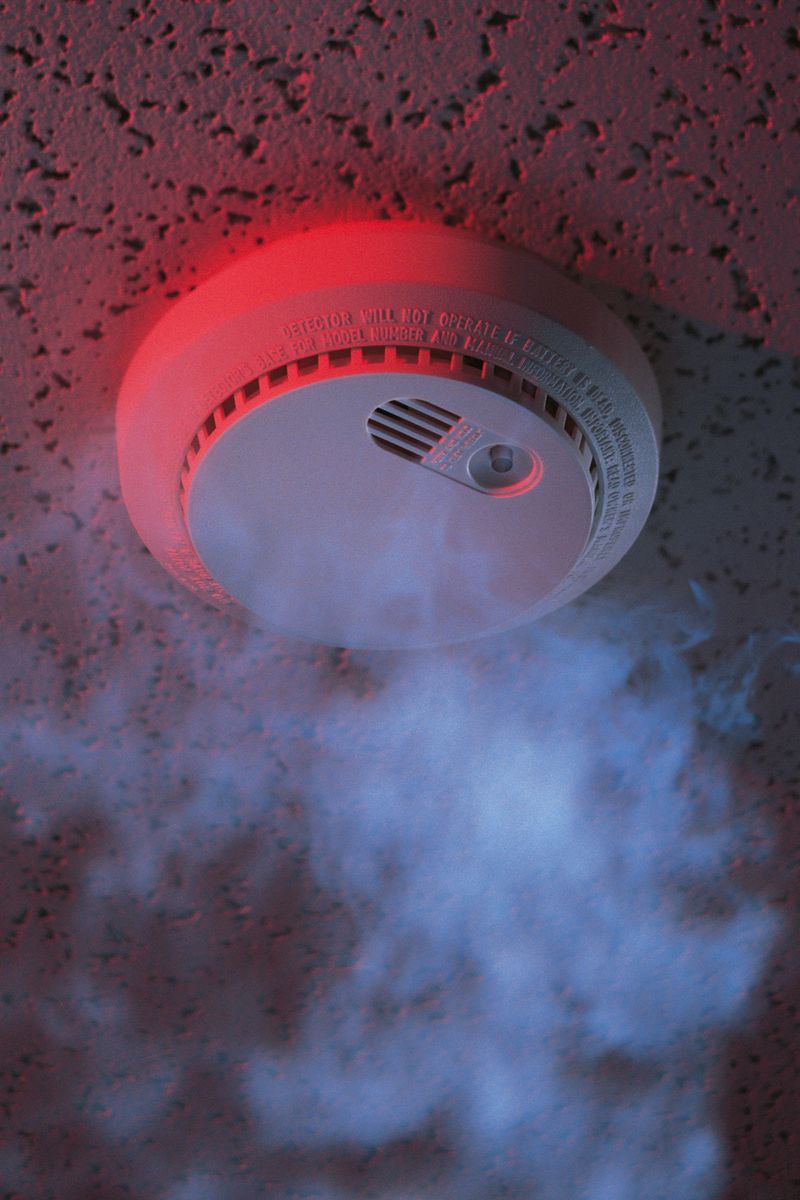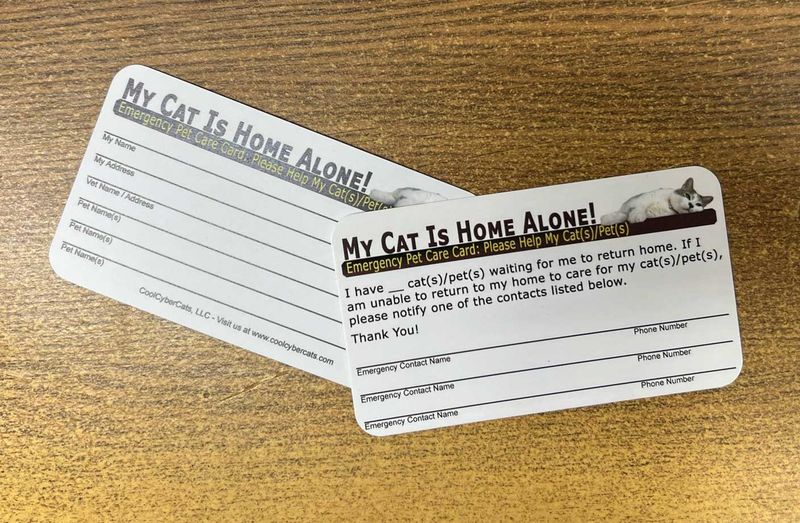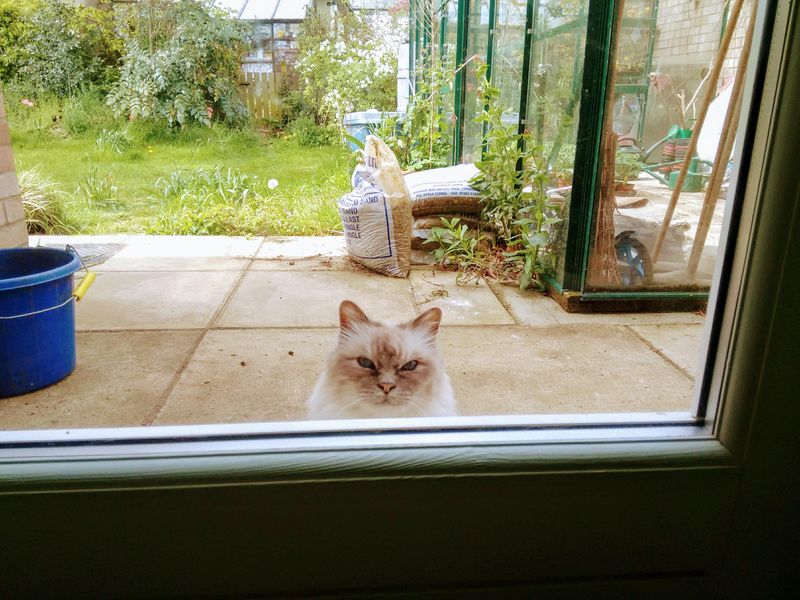📖 Table of Content:
- 1. Craft an Escape Plan
- 2. Designate a Safe Zone
- 3. Regular Fire Drills
- 4. Prepare a Cat Emergency Kit
- 5. Update Identification
- 6. Install a Pet Alert System
- 7. Install Cat Door with Escape Access
- 8. Teach a Safety Cue
- 9. Maintain Open Exits
- 10. Enhance Home Safety
- 11. Eliminate Fire Hazards
- 12. Opt for Flame-Safe Toys
- 13. Ensure Working Smoke Detectors
- 14. Keep Emergency Contacts Ready
- 15. Build a Neighborhood Network
Ensuring your cat’s safety during an unexpected emergency is absolutely crucial. With careful planning, you can create a secure environment for your feline companion even in chaotic situations. Being prepared not only protects your pet but also increases the chances of a smooth evacuation. A well-organized home and a clear emergency plan can make all the difference when seconds count.
Taking proactive measures to safeguard your cat is key. Familiarize yourself with fire escape routes, assemble an emergency kit, and update your pet’s identification details. These steps ensure that both you and your cat are ready to act quickly in an emergency. When you plan ahead, you build the confidence needed to face unexpected challenges head-on.
These tips address important aspects of safety, from creating a secure environment to establishing effective communication signals with your cat. Adopting these strategies can significantly improve your pet’s chances of a safe evacuation. With a well-thought-out plan in place, you can be better prepared to safeguard your cat and ensure their well-being in any crisis.
1. Craft an Escape Plan
Creating a detailed escape plan is crucial. Map out all exits, considering your cat’s favorite hiding spots. Make sure your plan is simple and easy to remember for the whole family. Envision different scenarios, such as blocked doors, and always have an alternative route. Involve everyone in the household to ensure they understand their roles. Practice the plan regularly, especially with your cat, so they become familiar with evacuation cues. Familiarity reduces panic during emergencies, facilitating a smoother escape for both humans and pets. Prioritize your cat’s safety by having a clear, actionable escape strategy.
2. Designate a Safe Zone
Choose a secure, easily accessible room as a safe zone for your cat. This area should be free from hazards and equipped with essentials like food, water, and a litter box. Ensure the room has a window or an exit to facilitate emergency escapes. Make it comfortable with familiar items to reduce stress during an emergency. Regularly update the supplies to keep them fresh. Having a designated safe zone provides a secure retreat for your cat, offering peace of mind for both you and your furry friend during a crisis.
3. Regular Fire Drills
Conduct a fire drill and familiarize your cat with the sound of alarms and evacuation routines to minimize confusion. By practicing, you train your cat to follow your lead during an emergency. In emergencies, every second counts, and a prepared cat will save you precious time. Regular drills ensure that all family members, including your cat, know exactly what to do, improving overall safety.
4. Prepare a Cat Emergency Kit
Assembling a cat emergency kit is vital for preparedness. Include food, water, medications, and familiar items like toys to comfort your pet. Ensure the kit is portable and easy to access in an emergency. Regularly check and update its contents to avoid expired supplies. Having an emergency kit ready ensures your cat’s needs are met, even if you’re unable to return home immediately. In emergencies, keeping your cat comfortable can reduce stress and improve safety. An organized kit helps maintain your cat’s well-being when it matters most.
5. Update Identification
Keeping your cat’s identification current is essential. Update ID tags with your latest contact details and ensure your cat is microchipped. This increases the likelihood of a safe return if separated. Regularly check the information on the tags and chips, especially after moving or changing phone numbers. In an emergency, your cat might panic and run, but updated identification improves the chances of a reunion. Safeguarding your cat’s identity provides peace of mind, knowing that even if they get lost, they have a way back home.
6. Install a Pet Alert System
Consider using a pet-specific alert system that notifies you if your cat is in distress. These devices can detect unusual movements or sounds, sending alerts to your phone. Installing such a system provides an extra layer of safety, especially if you’re not home during a fire. Ensure the device fits comfortably on your cat’s collar and is regularly charged. Pet alert systems help you respond quickly to emergencies, potentially saving your cat’s life. Technology offers new ways to ensure your pet’s safety even when you’re away.
7. Install Cat Door with Escape Access
A strategically placed cat door can provide your feline with an independent escape route during a fire. Ensure the door leads to a safe, enclosed area outside. Regularly check the functionality of the cat door. Make sure it isn’t obstructed and your cat knows how to use it. Incorporate the use of the door into your cat’s daily routine so it becomes second nature for them to use it when needed.
8. Teach a Safety Cue
Training your cat to respond to a specific cue, like a whistle, is a valuable safety measure. This training encourages your cat to come to you quickly in emergencies. Use positive reinforcement to teach the cue, practicing regularly in a calm setting. Over time, your cat will associate the cue with safety and rewards. In an emergency, this can be the difference between panic and a controlled response. Teaching a safety cue builds trust and ensures your cat knows where to find security during a crisis.
9. Maintain Open Exits
Make sure all exits in your home remain clear and accessible at all times. Unblocked windows and doors provide quick evacuation routes and improve ventilation during a fire. Regularly check these exits to ensure they are functioning properly, and teach your cat to associate them with safety. In an emergency, having open and accessible exits can significantly impact your ability to evacuate quickly. Keeping exits clear not only aids in escape but also helps emergency responders in accessing your home.
10. Enhance Home Safety
Enhancing home safety with fire-resistant doors and barriers can contain potential fires. Install these in key areas to protect your cat and property. Fire-resistant materials slow down the spread of fire, providing you with more time to evacuate. Regular maintenance ensures these safety features remain effective. By investing in these protections, you create a safer environment for your cat. A home equipped with proper safety measures not only safeguards your belongings but also ensures your pet’s well-being in emergencies.
11. Eliminate Fire Hazards
Organizing your home to eliminate fire hazards is essential. Remove flammable materials and ensure furniture is arranged safely. Focus on areas where your cat spends time, reducing risks. Regularly inspect your home for potential hazards, and take corrective action promptly. This proactive approach minimizes the chances of fire-related accidents. A tidy, organized home not only reduces fire risk but also creates a comfortable, stress-free environment for your pet. Keeping your living space hazard-free protects both you and your furry companion.
12. Opt for Flame-Safe Toys
Select toys made from flame-safe materials for your cat. Non-flammable toys reduce the risk of adding fuel to a fire. Check for safety certifications when purchasing, ensuring the toys meet high standards. Regularly inspect toys for wear and tear, replacing them as necessary. This not only prioritizes your cat’s enjoyment but also enhances their safety. Providing flame-safe toys creates a secure play environment, contributing to overall fire safety at home. Your careful choices make a significant difference in their protection.
13. Ensure Working Smoke Detectors
Regularly test and maintain smoke detectors throughout your home. Ensuring these are functional provides early warnings in a fire. Place detectors in key areas, such as near sleeping quarters and the kitchen, and replace batteries as needed. A working smoke detector alerts you to danger, giving you and your cat precious time to evacuate. Regular maintenance of these devices is a vital part of home safety. By ensuring your smoke detectors are in top condition, you protect your household and enhance your cat’s safety.
14. Keep Emergency Contacts Ready
Prepare a list of emergency contacts for quick access. Include your vet, local animal rescue services, and trusted neighbors. Keep this list in a visible and accessible location, such as near your phone. In an emergency, quick access to these contacts can expedite assistance for your cat. Regularly update the information to ensure accuracy. Having emergency numbers ready not only reduces response time but also provides peace of mind, knowing help is readily available. This preparedness is crucial for your cat’s safety and well-being.
15. Build a Neighborhood Network
Collaborate with neighbors to establish a pet buddy system. This network ensures someone is available to help retrieve your cat during an emergency. Share information about your cat’s habits and hiding spots. Regular communication strengthens these relationships, building trust and cooperation. In emergencies, having trusted allies nearby can be invaluable. A neighborhood network provides additional support, ensuring your cat’s safety even if you’re unavailable. Working together creates a safer community environment for all pets, enhancing their protection during crises.
